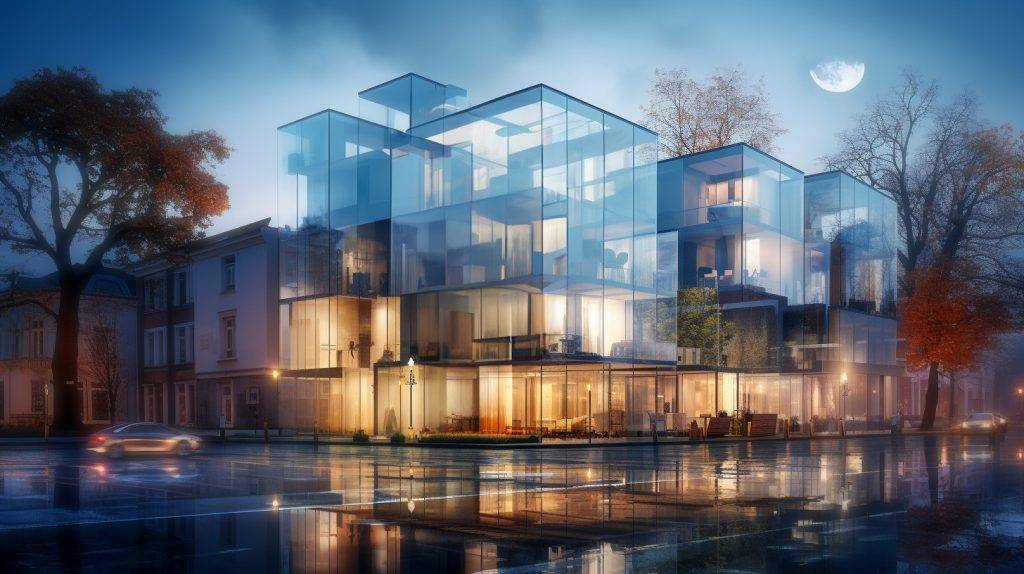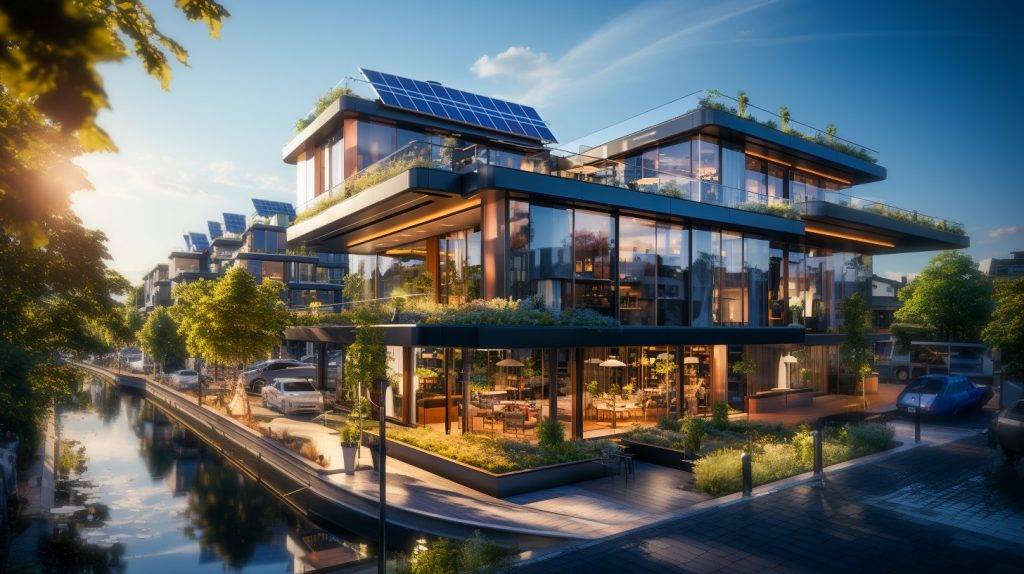
Ready for story time? Once upon a time, there was a small town where people lived in their houses and apartments. They were content, but they knew that they were leaving a significant ecological footprint. One day, they decided to make a change and started designing their buildings sustainably. And so, the story of the “Buildings of the Future” began – but it’s not just a fairytale. Let’s dig in.
Contents:
- Sustainable buildings – an imperative for our future
- What are sustainable buildings and the buildings of the future?
- Building Energy Management
- Examples of Sustainable Buildings and Zero-Energy Buildings
- Closing thoughts
After reading this article, you will gain a deeper understanding of sustainable construction and zero-energy buildings.
Sustainable zero-energy buildings – an imperative for our future
In a world where environmental pollution and climate change make headlines daily, it is crucial to discover sustainable solutions for our way of life. One such solution lies in sustainable buildings. In the year 2022, the construction sector accounted for approximately 38% of global energy consumption and 36% of CO2 emissions. Hence, concentrating our efforts on sustainable buildings is of utmost importance in reducing our energy consumption and CO2 emissions.
What are sustainable buildings and the buildings of the future?
Sustainable buildings, also known as “buildings of the future,” are designed, constructed, and operated in an environmentally friendly and resource-efficient manner. While smart buildings might have a different focus, these buildings employ energy-efficient technologies, sustainable materials, and innovative construction methods, all aimed at minimizing energy consumption while ensuring comfort and the well-being of occupants. An exemplary illustration of such a building is the “Zero Energy Building” or “Net Zero Building.”
A Zero Energy Building, also known as a Net Zero Energy Building, is a structure that generates the same amount of energy it consumes over the course of a year. This remarkable feat is achieved through a combination of energy-efficient measures and renewable energy sources, such as solar power. ZEBs play a pivotal role in the future of sustainable buildings, as they have the potential to drastically reduce energy consumption and nearly eliminate CO2 emissions.
Building Energy Management
Effective energy management is a crucial factor in creating sustainable buildings and shaping the future of architecture. It encompasses a wide range of technologies and strategies that contribute to reducing energy consumption and enhancing efficiency. Let’s explore a few examples of energy management technologies and strategies in the realm of sustainable buildings:
- Smart Thermostats: These innovative devices learn the occupants’ preferences and adjust heating and cooling accordingly, saving energy while enhancing comfort.
- LED Lighting: Compared to traditional bulbs, LED lamps consume less energy and boast a longer lifespan. By implementing LED lighting solutions, buildings can significantly reduce their energy consumption for illumination purposes.
- Energy-Efficient Windows: Modern, high-efficiency windows can help minimize heat loss during winter and heat gain during summer. This results in reduced energy consumption for heating and cooling needs.
- Energy Monitoring Systems: These systems ensure real-time monitoring of energy consumption, enabling the identification of inefficient appliances or behaviors. This empowers occupants to take targeted energy-saving measures.
While the aforementioned examples highlight specific aspects and use cases, it is important to note that technology and application can vary significantly from project to project. However, they all share a common goal: to achieve zero-energy buildings. By integrating such energy management practices, we can pave the way toward a more sustainable and energy-conscious future.

Examples of Sustainable Buildings and Zero-Energy Buildings
There are already numerous impressive examples of sustainable buildings and buildings of the future all around the world. Here are a few notable examples of smart buildings around the world:
- The Crystal (London, United Kingdom): This building stands as one of the largest centers for sustainable urban development globally, showcasing a variety of eco-friendly technologies such as solar panels, rainwater harvesting systems, and intelligent lighting systems.
- The Change Initiative / Seven Oaks (Dubai, United Arab Emirates): This retail store serves as a prime example of sustainable buildings, featuring energy-efficient lighting, solar panels for power generation, and a system for reusing condensate water from air conditioning units.
- One Central Park (Sydney, Australia): This residential building is an excellent showcase of sustainable buildings and the buildings of the future. With its vertical garden facade contributing to air purification, and a heliostat directing natural daylight into the central park and surrounding buildings.
Stay tuned to our blog for more examples and further details in the days ahead. Don’t forget to check back later!
Closing thoughts
The future of sustainable buildings and architecture is incredibly promising. With continuous advancements in technology and materials, buildings are becoming more energy-efficient, environmentally friendly, and comfortable for their occupants. Simultaneously, governments and organizations worldwide are increasingly recognizing the significance of sustainable buildings, promoting their development and widespread adoption.